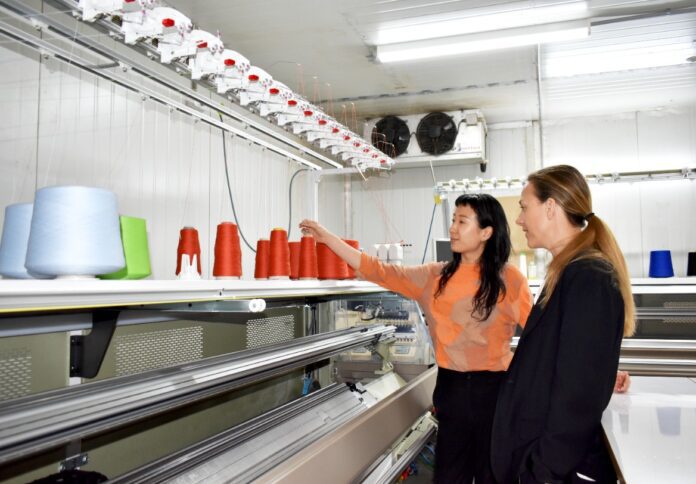
New research from the Australian Fashion Council and Epson Australia highlights the critical juncture of Victoria’s nearly $1 billion fashion manufacturing industry, detailing both its current and future value.
The report, titled “Victorian TCF (Textile, Clothing, Footwear) Manufacturing: Future Jobs, Technology and Economic Growth,” was compiled by RMIT University and reveals that the Victorian TCF manufacturing sector has lost 18 per cent of its value over the past five years.
However, it suggests that strategic policy interventions and collaboration between industry and government could inject an additional $225 million into the state’s economy and create 1,500 new jobs, raising the sector’s value to $1.09 billion.
Over half of the businesses in this sector employ a workforce that is more than 60 per cent female, compared to 28 per cent in the broader Australian manufacturing industry.
Without increased investment and prioritisation, the report warns that the sector could lose $98 million in value and 700 jobs by 2030.
Additionally, this decline could lead to a loss of technical skills, increased reliance on overseas supply chains, and missed opportunities to bolster Victoria’s reputation for producing high-quality, innovative, and sustainable products.
The report outlines five key recommendations to drive growth in the sector:
- Prioritise TCF Manufacturing: Include TCF manufacturing as a priority in the Made in Victoria statement.
- Enhance Procurement Policies: Strengthen government procurement policies to increase local content in uniforms, workwear, and personal protective equipment (PPE).
- Revitalise Skills Training: Develop a new TCF skills and training program to address workforce skill gaps.
- Invest in Technology: Co-invest in advanced technology and future jobs to support a sustainable, circular clothing economy.
- Develop a National Strategy: Create a national TCF manufacturing strategy with Victoria leading the way.
Australian Fashion Council CEO Jaana Quaintance-James stressed the urgency of supporting local manufacturing.
“It’s imperative to the future of Victoria’s, and more broadly Australia’s, textiles, clothing, and footwear manufacturing industry that we collectively invest in and preference local. This sector is ours to lose,” she said.
Quaintance-James also highlighted the importance of quick action to support the female-dominated workforce in the sector.
“What has also been made clear is how important swift action is for the many women employed in fashion manufacturing, and how crucial the role of a female-powered workforce will be in turning its decline around,” she added.
The report also advocates for the adoption of a smart-factory model, which leverages technologies like digital sampling, digital printing, and laser cutting to reduce waste and production lead times.
Craig Heckenberg, managing director of Epson Australia, pointed to the benefits of sustainable technology in local manufacturing.
“The smart-factory concept and technology to support it, can allow Australian brands to produce high quality, sustainable Australian-made clothing, for Australian consumers and abroad,” Heckenberg said.
The report is available on the Australian Fashion Council’s website.




















